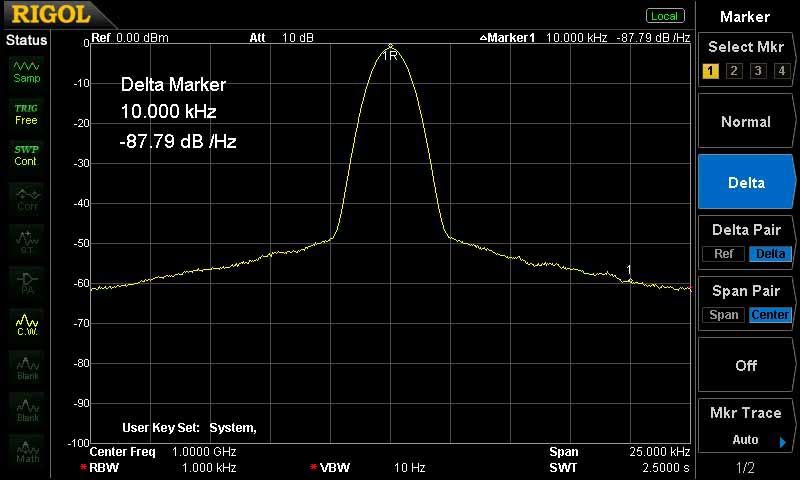
After swapping out a pinched coax cable, and checking the antenna, the RF returned to a healthy −30 dBm. The RF output of the transmitter was 76.2 MHz and with the Rigol in my office and the truck just outside the window, I made a quick measurement of the RF peak level (−49 dBm). Just after I checked out the analyzer, we began having issues with an IFB transmitter in one of our live broadcast trucks and I decided to press the Rigol into service to troubleshoot the problem.

The learning curve on this unit is almost nonexistent. The buttons and menus are very intuitive, and the nomenclature is hauntingly similar. I found that for anyone who has used “late generation” spectrum analyzers, the DSA815 will be comfortingly familiar. Over the years, I’ve had access to many spectrum analyzers, including those from Hewlett-Packard, Tektronix and Avcom, and most recently, the Agilent E4407B. I connected a small headset and was able to verify the demodulator feature of the unit as well. With this simple setup, I was able to tune the DSA 815 to local AM and FM radio stations. For an RF input, I attached a small “antenna” using an “N” to “F” adaptor. Two “N” connectors are provided on the front panel for RF input (max +20 dBm/50Volts DC, 50 ohm) and the tracking “Generator Out” (50 ohm with a maximum output of 50 Volts DC).Īfter the unit arrived, I unboxed it and applied power. Nine buttons located at the right of the screen provide most of the menu actions, and there are seven other groups of buttons, including Frequency, Span, Amplitude, Control, Marker, Measure, Utility and Edit. In addition to the display panel, the front of the DSA 815 includes Print, Help, and Preset buttons, along with power switch, front USB port (Type A), and a 3.5 mm headphone jack. In addition to the AC power cord, the analyzer’s rear panel ins and outs include BNC connectors labeled Trigger In, 10 MHz Out, 10 MHz In, an RJ-45 (LAN) connector, and a single USB (Type B) port. The display is an 8-inchTFT LCD with a resolution of 800 x 480 pixels, and can display 64,000 colors.

It operates on AC mains voltages between 100 and 240, with a maximum power consumption of 50 Watts with all options. The feature-packed DSA815 measures a mere 14 x 7 x 5-inches, and weighs about 9.4 pounds.


 0 kommentar(er)
0 kommentar(er)
